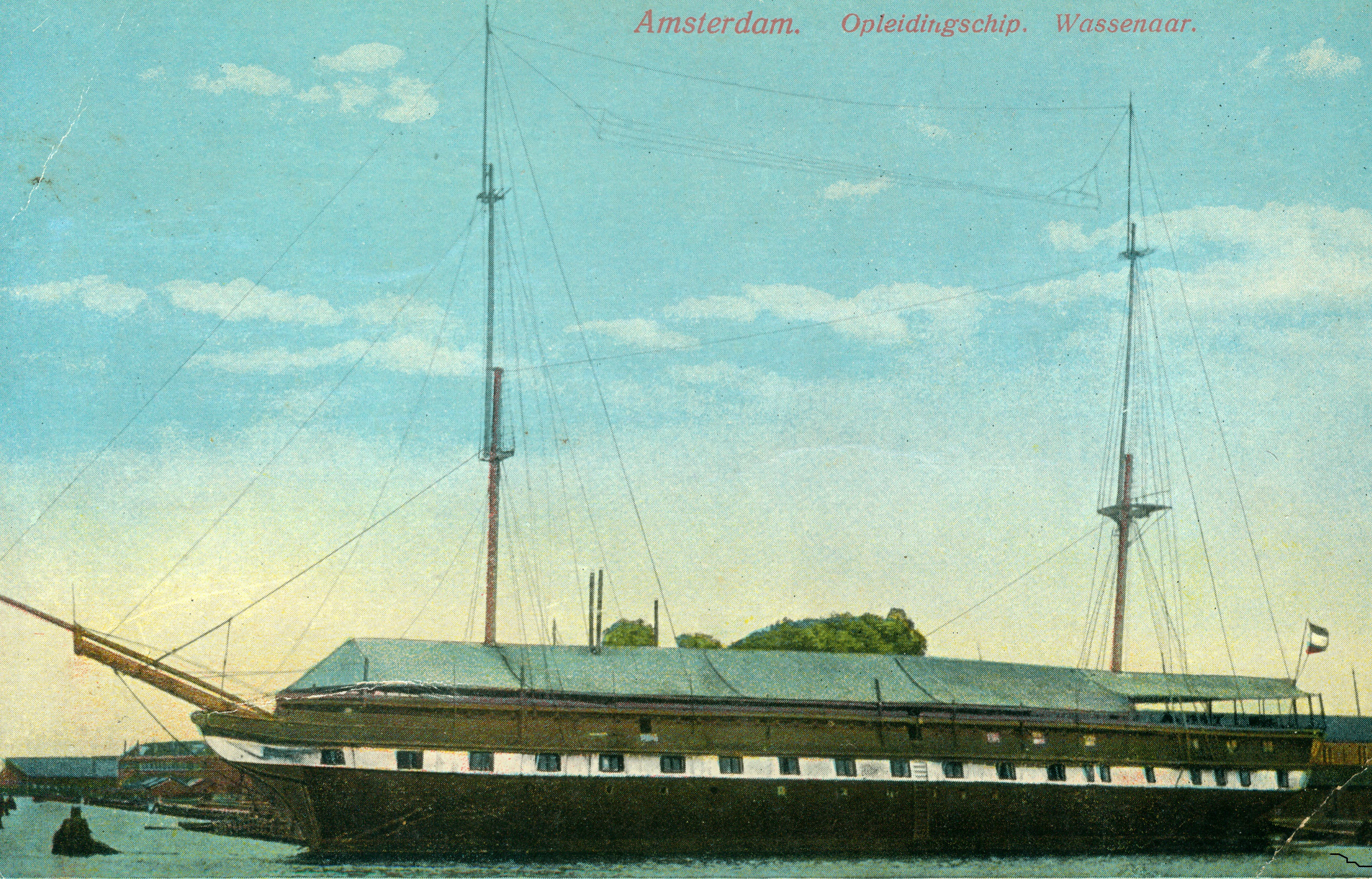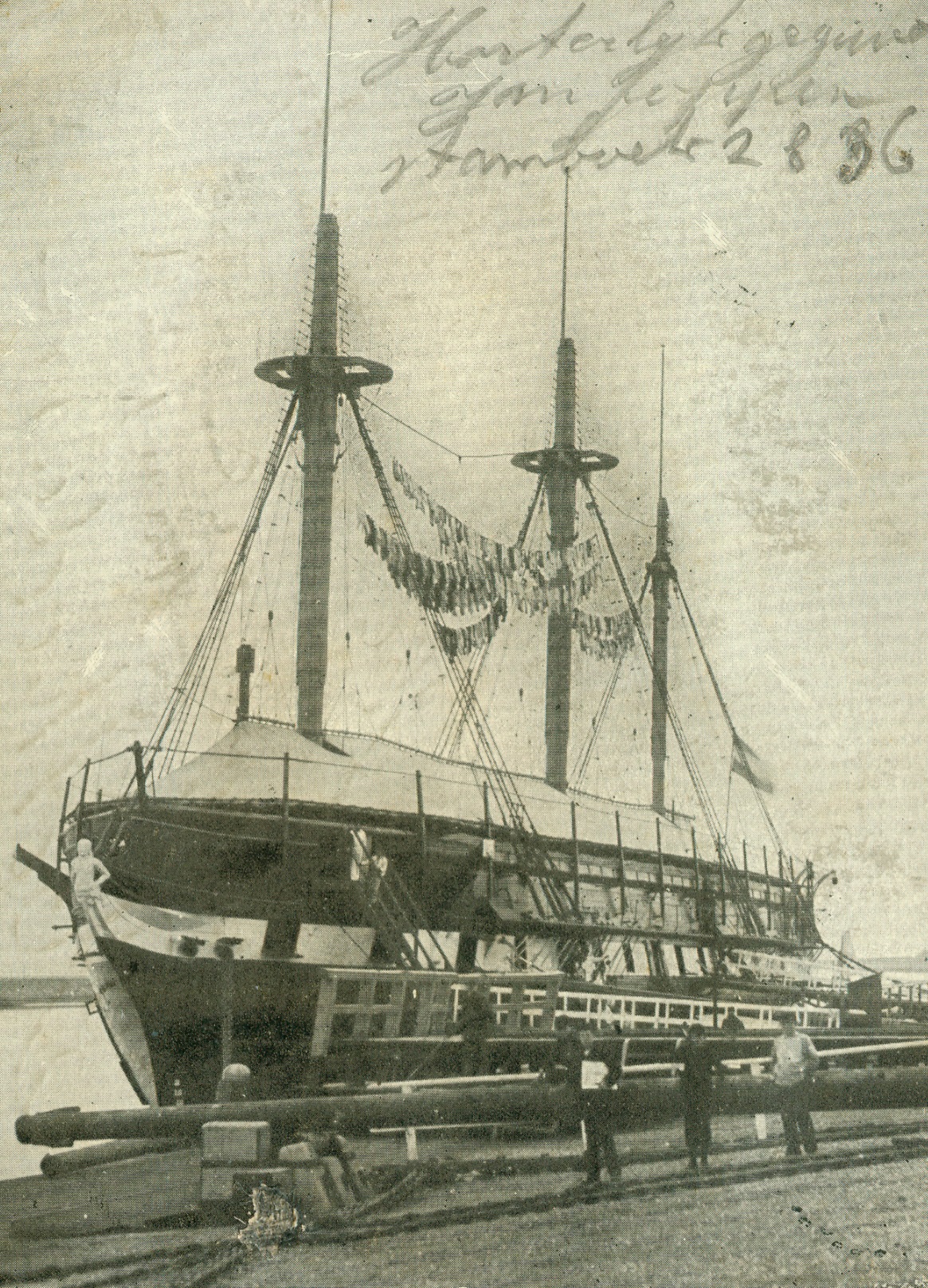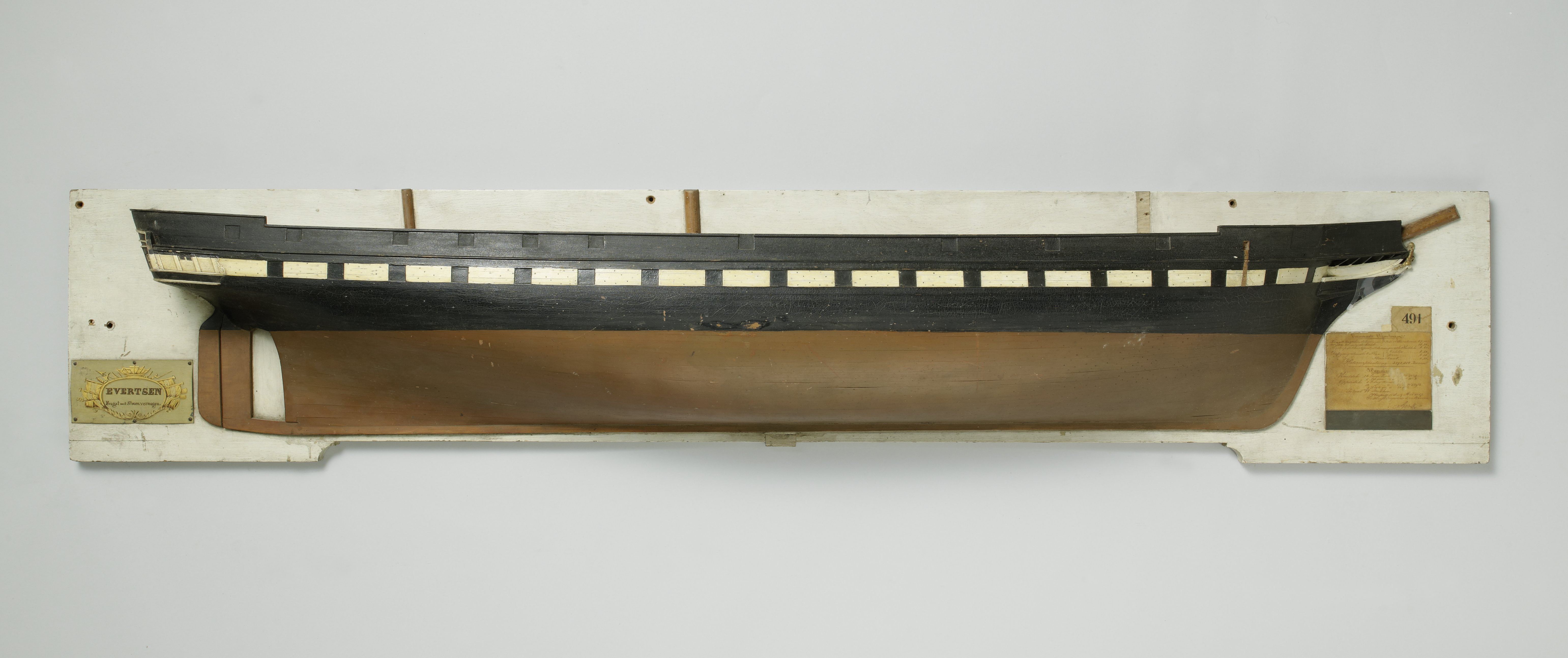Wassenaar as training ship at Amsterdam, Netherlands
Model Rijksmuseum, Amsterdam, Netherlands. Original url
Notes
1. Call sign GQBE, wood-built, laid down at the navy yard at Amsterdam, Netherlands as the 74 gun ship of the line Piet Hein on 15 February 1833, disassembled 1850, laid down as a screw steam frigate designed by A.E. Tromp in 1853, launched as the Admiraal van Wassenaar on 6 September1856, commissioned on 16 July 1857, converted into a training ship at the navy yard of Amsterdam 1875, commissioned for training boys and ordinary seaman 11 April 1876, until 1 January 1913 used as training and guard ship at Amsterdam and sold on 28 May at Amsterdam for ƒ 37.781,00 to be broken up, displacement 3.650 tons, dimensions 62,36 (between perpendiculars)-72,86 (over all) x 15,72 x 6,80 metres, horsepower 300 hp, speed maximum 10,67 miles, armament 8 (4 medium 30pd guns, 4-12cm guns, 1877: long 12pd guns)-45 guns and a crew numbering 450 men. On 1 October 1876 were 335 boys trained divided over 4 groups, the youngest (group 1) numbered 108 boys, groups no.2-4 respectively 103, 60 and 64.
2. Call sign GQJK. Laid down at the navy yard at Vlissingen, Netherlands on 16 October 1854, launched, on Monday 21 September 1857, destined for training sea militia 1 May 1877, decommissioned on 15 November 1881, at the navy yard at Willemsoord, Netherlands engines and boilers removed, renamed Neptunus on 11 March 1893, used as accommodation for army personnel September 1914, stricken in 1921. Wood-built. With a displacement of 3.300 ton were her dimensions 63,50 x 15,70 x 6,80 metres. The horsepower of 400 hp allowed a speed of 8 knots. Her crew numbered 500 men. The original armament consisted of 51 guns (1 long 60pd gun, 42 long 30pd guns and 8 rifled 16cm guns) and in 1882 into 4-12cm guns, 8-7,5cm guns and 2-3,7cm guns. Her design of the stern including screw shaft entrance was altered despite protests of the engineers resulting in severe vibrations. The Dutch newspaper Middelburgsche Courant dated 17 September 1877 reported the intended launching on Saturday 19th between 13.00-14.00 o’clock. The minister of navy was expected to arrival on Friday to attend her launching. She was called a frigate with steam power. The edition of the 22nd reported however that the launching failed when the ship stocked after just 1/3 or ¼ of the slip. Despite all efforts which continued into the evening to remove the obstacles which prevent the further launching process did men not succeeded in doing so. The next day [=Sunday] was the whole day worked to get everything well. She was according to the Nederlandsche Staatscourant dated the 23rd finally launched on Monday 21st.
3. Screw steamship 1st class, call sign GRDC, wood-built, laid down at the navy yard at Vlissingen, Netherlands 28 February 1856, launched 31 July 1859, stricken 1874, guard ship at Batavia, Dutch East Indies 1875, decommissioned 8 December 1883, towed half January 1884 towards the roads of Surabaya, Dutch East Indies, sold on an auction for ƒ 20.600,00 to the Arab Sai Agil bin Hijdroes to be broken up in the morning of 15th March 1884, dimensions 63,5 x 15,7 x 6,7 metres, displacement 3.300 tons, horsepower 400 hp, speed 8 miles, a crew numbering 500 men and an armament of 4 (as guard ship 1-15cm, 3-12cm guns)-51 guns (consisting of 1 long 60pd gun, 30-long 30pd guns, 12-20” grenade guns and 8 rifled 16cm guns).
4. One-deck flush-decked corvette, call sign GQKL, laid down at the navy yard at Vlissingen, Netherlands 31 July 1839 by C. Soetermeer/A.E. Tromp, launched 26 May 1842, docked at the navy yard at Hellevoetsluis, Netherlands 20-28 September 1854 and 15 December 1856-12 April 1858, store ship for projectiles in the harbour of Nieuwediep, Netherlands, training battery until 30 November 1907, accommodation ship for the Hr.Ms. Marnix 1908, accommodation for the ‘vuurwerkmakerij’ with materials transferred from Vlissingen, Netherlands towards Willemsoord, Netherlands January 1915, displacement 775 tons and as dimensions 36,5 (between perpendiculars) x 10,00 (inner hull) x 4,25 (fore)-4,82 (aft) x 5,39 (hold below main deck) and an original armament of 20-12pd guns or 20-30pd carronades, 8-12pd carronades and 2-6pd guns, later reduced to 10 guns (included 12cm guns). Figurehead female torso in roman armour decorated with ribbons.



